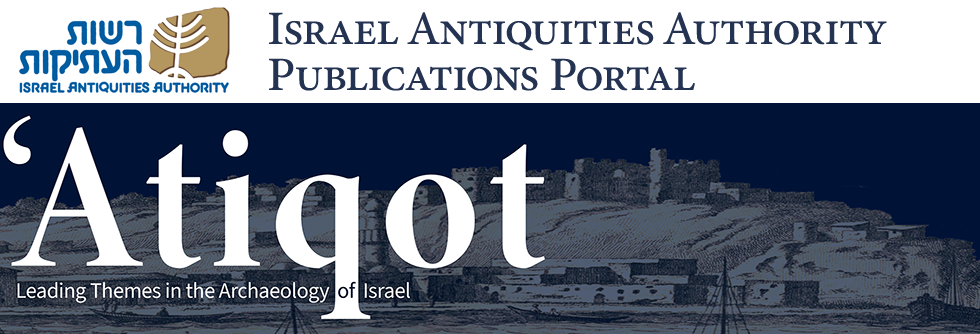Abstract
The excavation conducted at Ḥorbat ‘Illin Taḥtit (Lower) revealed the fringes of the previously excavated Early Bronze Age settlement at the site. A large residential structure, comprising two adjoining rooms and a large courtyard, was uncovered, as well as another, partially preserved structure, which was separated from it by an alleyway. Almost all the excavation loci contained a mixture of EB IA and EB IB pottery types. A small assemblage of knapped flint artifacts was unearthed; they were well-preserved and homogenous in composition. The small assemblage of faunal remains points to an economy based on sheep, goat and cattle. The findings indicate that the site was first settled during EB IA, followed by a gap in the early phase of EB IB; it reached its zenith in the later phase of EB IB. The article discusses the chronology, geographic distribution, and cultural practices in the Bet Shemesh region during EB I.
Keywords
Judean Shephelah, Early Bronze Age, typology, chronology
Recommended Citation
Be’eri, Ron; Paz, Yitzhak; Agha, Nuha; Cohen-Weinberger, Anat; and Vered, Ariel
(2020)
"Ḥorbat ‘Illin Taḥtit: A Late Early Bronze Age IA–B Settlement in the Bet Shemesh Region (pp. 1–46),"
'Atiqot: Vol. 101, Article 2.
DOI: https://doi.org/10.70967/2948-040X.1960
Available at:
https://publications.iaa.org.il/atiqot/vol101/iss1/2
Included in
Agriculture Commons, Biblical Studies Commons, History of Art, Architecture, and Archaeology Commons

